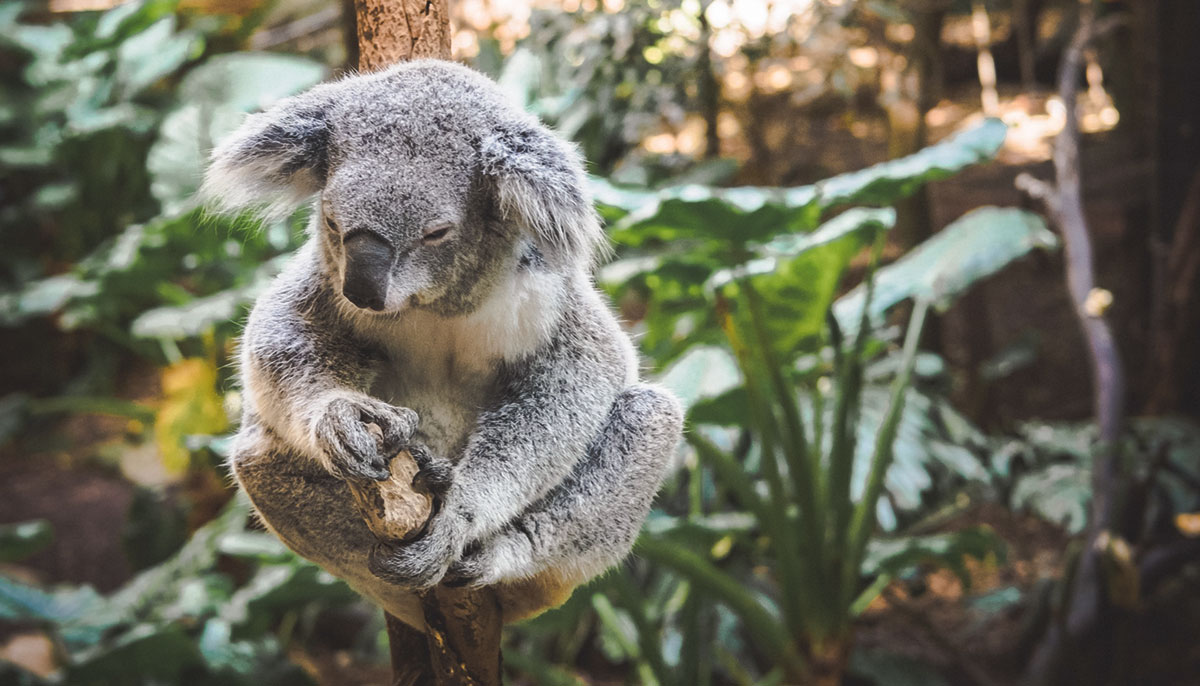Put out the fire across the ocean.
—Zen koan
Northern Winter
Gathered at the thistle seed
finches say, “We’ll be
your winter flowers.”
Meanwhile, in New South Wales, a common magpie has learned the song of the ever-present fire engine sirens. She has captured the rise and fall and the urgency—the mixture of alarm, despair, and hope. It’s her only comment on the Australian fires, or the only comment we understand. She’s doing what she can.
I’ve been thinking about the old forests of South Queensland and Northern New South Wales since they’ve been burning. They are remnants of a far-distant time when Australia and Antarctica were joined in the supercontinent of Gondwana. Trees found as fossils in Antarctica, live on in Australia, often at a slight elevation on the eroded spurs of ancient volcanoes. Those zones are unlike anything else on the continent. Some of the trees are themselves ancient beings, birches several thousand years old, their great root structures covered with moss, epiphytes, and ferns; multiple boles rise out of them.
The world itself is a mystery school and teaches us what it needs. It gives us impossible tasks and impossible journeys.
I became close to those forests when, like many young people, I felt outside of life, and sought a way in. I couldn’t fit myself into any of the off-the-shelf solutions available at that time, or perhaps at any time, and in addition my mind kept biting itself, like an animal trying to get free.
This is the sort of condition for which friends and ancient texts say, “Have you tried meditation?” but I hadn‘t even heard of such a thing. I did know what it was like to be inside of life as children do, but it was an occasional and unpredictable event. I had thought my way as far as I could into the “What’s it all about?” question, and realized that more philosophy wouldn’t help me.
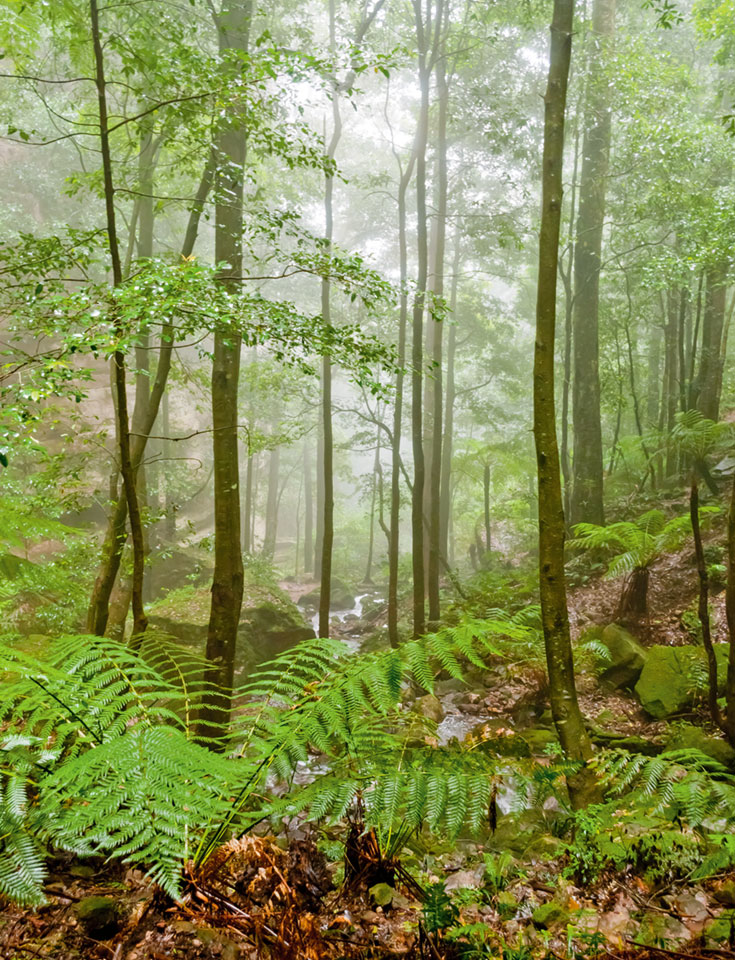
I wanted to find my place in the order of things and that meant a change of heart of some kind. I was close to some Aboriginal people, who listened to life with sweetness and attention, and they felt very connected to the bush, so that seemed to be a clue. I took up spending the night alone in the Gondwana forests of South Queensland, without quite knowing why.
The old trees had a mysterious presence, a Tolkienian quality of being left over from another world. I had the corner-of-the eye feeling that they might even shift around slowly at night when no one else was looking. Orchids hung over waterfalls, and there were broad-leafed stinging trees that discouraged touch but for which I felt a special affection. Ancient songbird lineages (an ancient songbird lineage is a marvelous idea in itself) persisted in the canopies, though the birds themselves were not easy to see.
When night fell, the forest came alive. Luminous beetles winked on and off as they traveled their beetle paths among the leaf litter. Elegant fungi shone softly, bluish, green, or red. I ran across great strings of glowworms as if I had stumbled into a fairy palace. Night birds called, and there was the occasional thump of a wallaby or rustle of a small rat-sized kangaroo called a potoroo. It might be raining hard in the high canopy, but I could still be fairly dry sitting beneath.
As the night progressed I accompanied it in a lazy, drifting way, not thinking my usual thoughts and sometimes falling asleep leaning against a tree. Silence had a texture. Gradually my mind became open to what was around me. At least for the period in the forest, I stopped wanting things to be a certain way. It was something simpler than I had been looking for, really, and I didn’t have a complete connection with it, but it was wonderful. I stopped reaching past the place I was in, stopped turning the visible world into assessments, and forgot who I was. This was a taste of what the old Buddhist teachers called “emptiness.” Eventually the plain, gray light of dawn would appear, and I was more at peace.
Later, when I learned that there was such a thing as meditation, I thought, “Oh, I taught myself to meditate there in the old forest.” That wasn’t quite right though. It was more modest and more accurate to consider that the old forest had taught me. I was trying to find my place in life, and the forest took me in, showing me that I was less alone than I imagined. When the thoughts fell out of my mind, I became part of the mystery, and was carried, included, and felt welcome in the cosmos of which the forest seemed to be an immediate and visible portion.
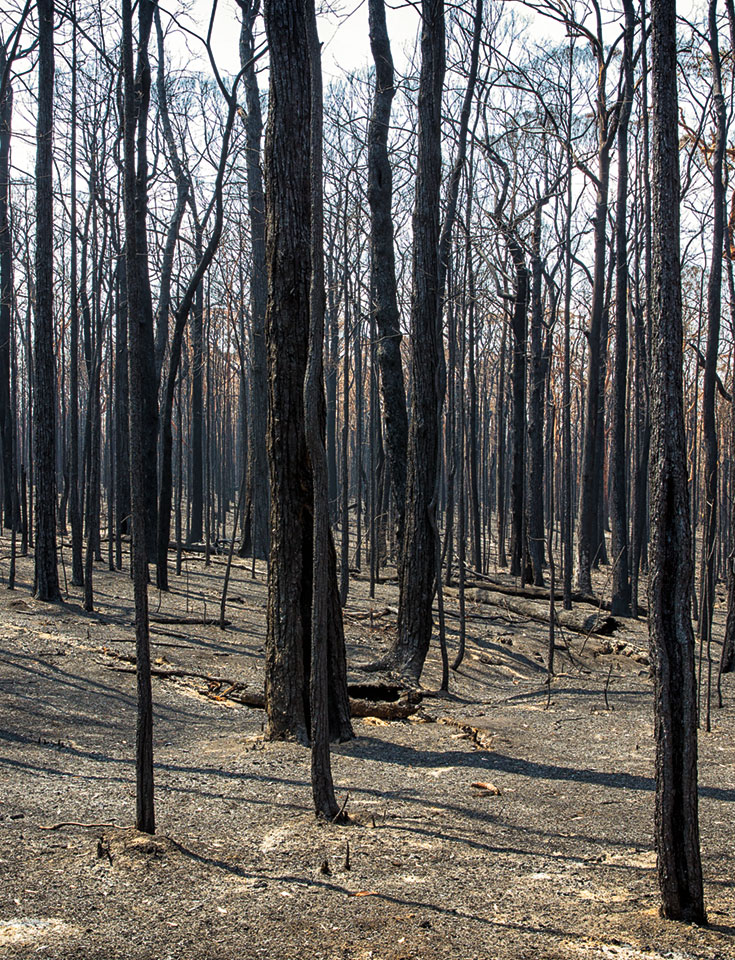
Those forests have suffered a great burning now, those places in my blood and my marrow, and I feel a tremendous sorrow in their loss. Over half the ancient Gondwana forest has burned and 80 percent of the Blue Mountains World Heritage Area near Sydney with it. The fires have been enormous in extent, twelve million acres. They have been so hot that the earth layer is scorched, and traveled so quickly that even large, fast birds like parrots and galahs get confused and die. The forests have become vast graveyards with dead animals lying among charred trees.
And what other creatures do the forests have? I feel moved to enumerate them, like the names of god, as if to praise them. There are lyre birds, with tails shaped like the musical instrument, who make even more comments than magpies. If you hear a loud call that sounds more like a gray thrush than a gray thrush does, then it’s the lyre bird. Years ago, when I taught traditional Zen retreats deep in the bush in New South Wales, lyre birds perfectly reproduced the sounds of the temple bells. People would suddenly turn up for interviews or come back early to the dojo. Lyre birds provided an element of beauty and surprise.
Then there are koalas, tree-dwelling, sloth-like creatures, endearing but very slow because of their diet of leaves. It’s hard for them to escape. There are echidnas, egg-laying mammals with a rolling reptilian gait, sharp spines, and poor eyesight, creatures of ancient design. They patrol the forest floor, eating ants, termites, and grubs. Wombats are relatives of koalas, but horizontal and more active. They live in palatial burrows, and their pouches face backward so they won’t fill with dirt when they dig. A wombat family lived under a chestnut tree at the retreat center where the lyre bird rang the bells, and often at dusk we would see them coming and going. Wombats can survive fires in their burrows if there is still oxygen, though of course they are likely to starve afterward.
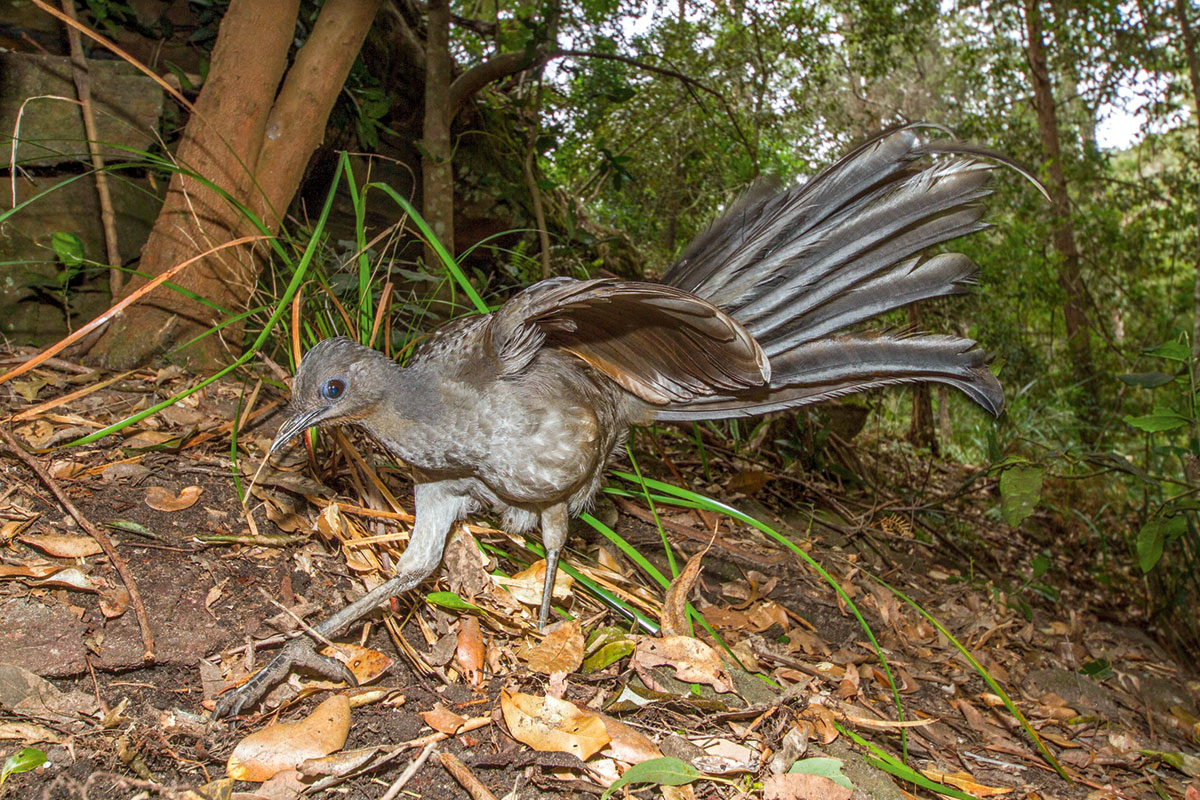
Australia has long been a fire ecology, but the current situation is extreme—it’s climate change. We’re in a different world from the one we hoped for, and the rainforests are likely leaving. The forests will still in some sense exist, like the ice age rivers and the mammoths that swam across them, and the lakes and hippos that are still carved into rocks above dunes in the Sahara. Now the forests too are moving into the unseen world. When my time comes and I go into the bardos, perhaps those paths will be there and I will walk them again.
Our era is undoubtedly difficult, and even crazy. We are in an underworld time. We know that we’re cutting down ancient trees, burning fossil fuels, melting the sustaining ice, finding leaders who pretend that we have no part in the changes that overwhelm us. We are suffering from forces greater than us and also from ourselves; we too are forces beyond our control.
So what to do for a practice? More is required than trying to calm the mind and just having the mind fill with disturbing thoughts again—playing whack-a-mole with whatever arises. “Stop the fire on the other side of the ocean,” goes the koan, giving us an impossible task—that’s an honest description of what we have.
The magpie is offering its own response to the impossible task of how to stop the burning. I imagine that it feels the great forces and calls the fire engines out of the dreamtime to come and save its friends.
I hadn’t thought that I was establishing a pattern in those night forests in Queensland, but I’m stuck with it now. Deep in the night here in California, I sit in meditation and that awe is still with me. The dark enfolds me, great horned owls call inside me, and geese clank on the wing (what are they doing up at this time of night, and so late in the season?). A pair of gray foxes drifts by in a silence so intense it is like a cloak. In the soft light of the crescent moon, I don’t see them come or go—they are just here and then gone, Mr. and Mrs. Slyboots.
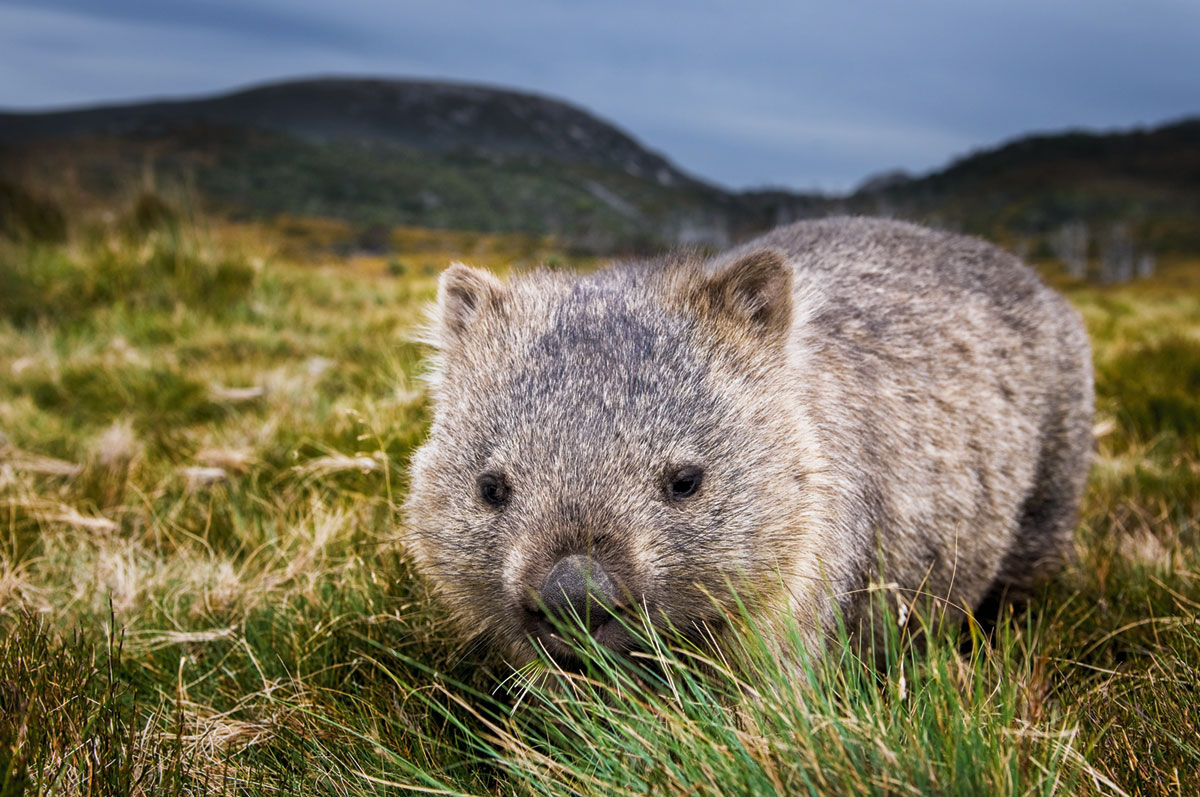
It’s too early to despair; it’s always too early to despair. The world itself is a mystery school and teaches us what it needs. It gives us impossible tasks and impossible journeys, and all we can say is that we love the world without knowing outcomes, because it is the only world we have, and because we never do know outcomes. You cannot explain your life or come to a conclusion about it.
A crisis can last for centuries, and during that time, even the difficulties are the gift. It’s like listening to the forest at night—when we’re anxious, or afraid, we’re feeling the time and our place in it, and it’s still good to be alive.
The infinity of the night stars comes to us and aids us, as it does for everyone, foxes, owls, and blinking beetles. In the alternative universe of night sitting, surprises appear, and the ancient light is a great, embracing force. It exists even within the impossible problems. We shall get unforeseen help on the journey because we always do.
And finally, what can I say to my daughter in the face of burning forests, climate change denial, oligarchic leadership, and catastrophic global warming, while also taking into account the sound of rain that is always home, the shock of apricot blossoms, the way finches act as flowers for the winter, and the way that, when I forget who I am, everyone has a beautiful face?
“One day,” I say, “one day, my child, all this will be yours.”
